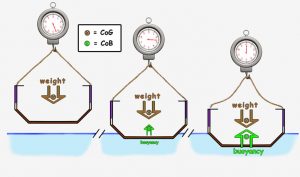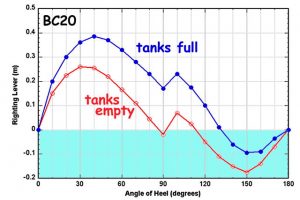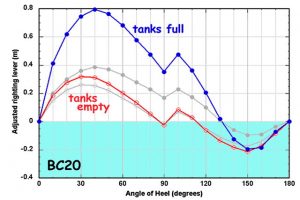25th Feb: The Physics of Water Ballast

 A discussion on the Swallow Boat Association Forum (which was supposed to be about “what outboard a BRe needs” had lead me to offer to write a “Library Article” about how water ballast works. With the bad weather continuing, I spent some time over the last week or so developing the promised article.
A discussion on the Swallow Boat Association Forum (which was supposed to be about “what outboard a BRe needs” had lead me to offer to write a “Library Article” about how water ballast works. With the bad weather continuing, I spent some time over the last week or so developing the promised article.
 The main misconceptions seemed to be that the weight of the boat disappears when it is floating, and that the water ballast needs to be above the water surface before it has an effect.
The main misconceptions seemed to be that the weight of the boat disappears when it is floating, and that the water ballast needs to be above the water surface before it has an effect.
Nick Newland, in an article on water ballast in the January 2015 Water Craft magazine, had noted that for the BR20 much of the gain in stability from filling the ballast tanks was because the boat was heavier. Writing the Library article really brought that fact home to me. For the BC20 the top figure on the left shows how the righting arm (“gz”), as a function of heel angle, is changed by filling the ballast tanks – surprisingly little.
However the lower figure shows the change in the righting moment, that is taking into account the change in magnitude of the restoring forces as well as the change in spacing. I’ve assumed that the hull weighs 450kg plus 100kg gear, and the full ballast tank an extra 380kg. I’ve normalised the result by the bare hull weight so as to compare with the righting arm values (shown in grey). The difference is impressive – I may well sail Seatern with full tanks more often in future!
[view a PDF version of the Library Article]


